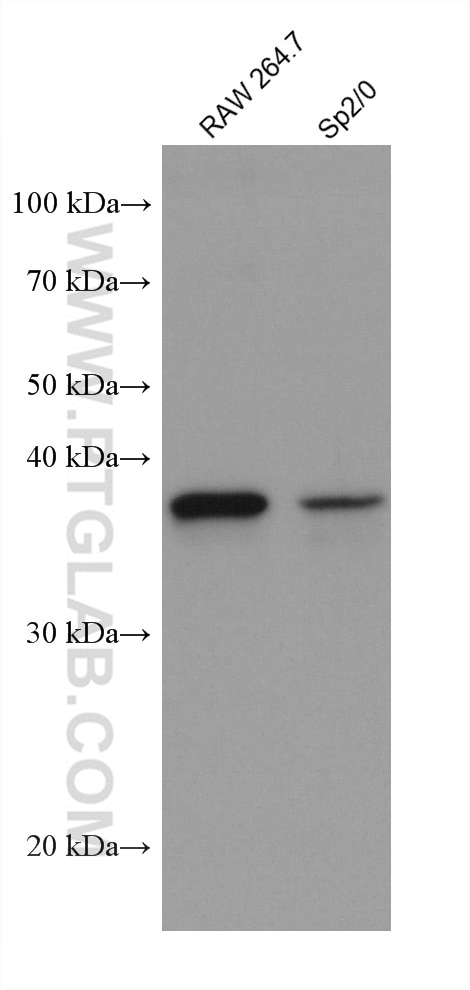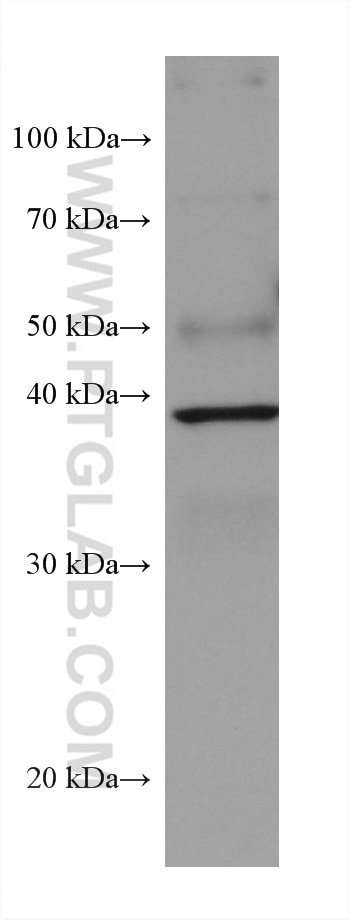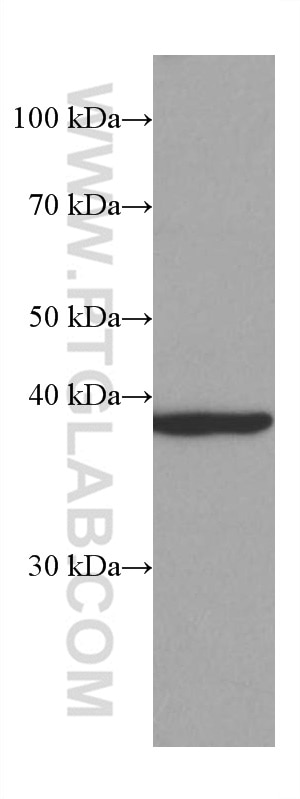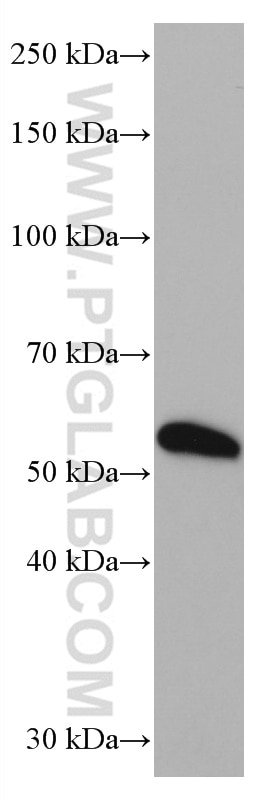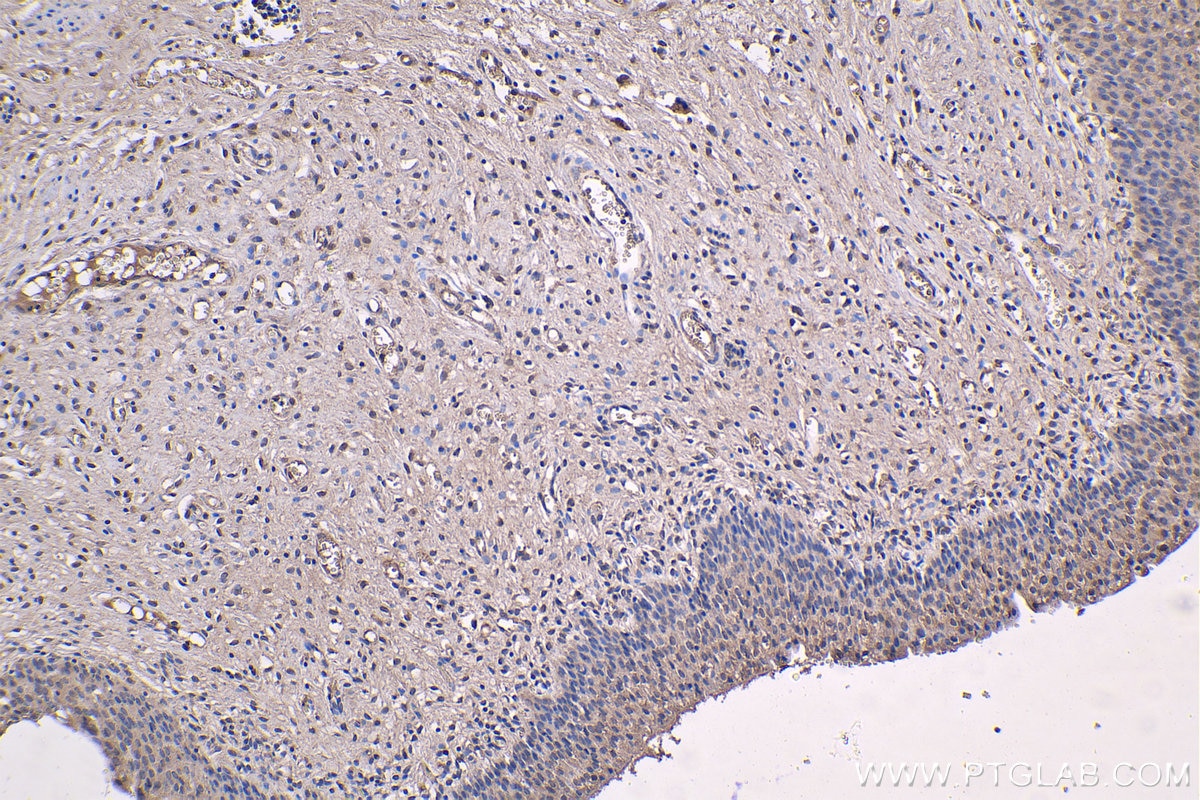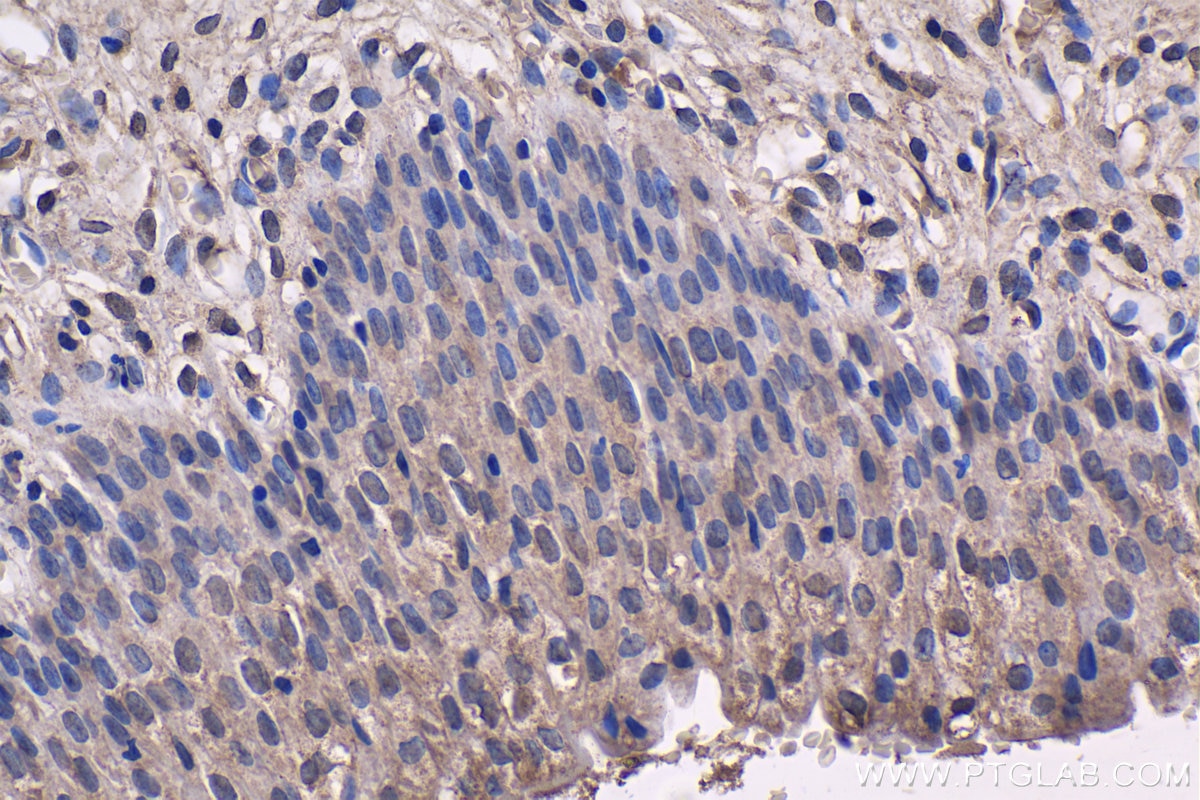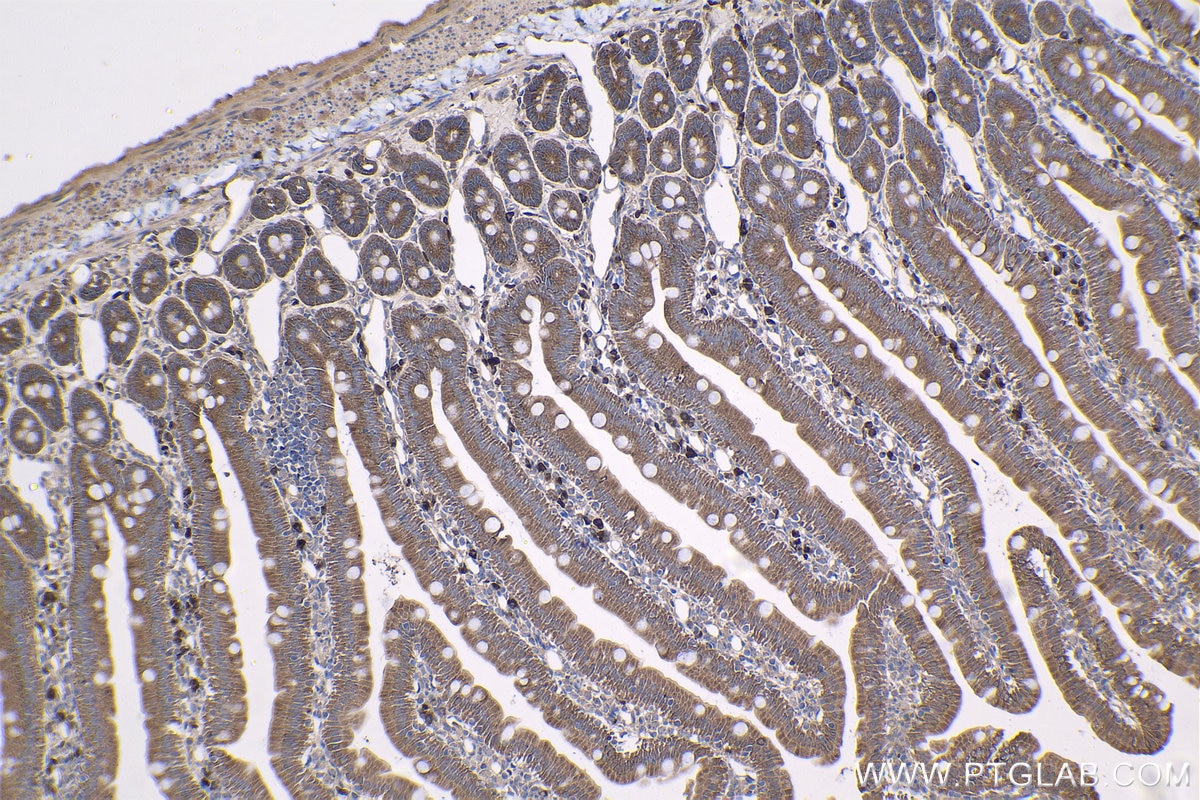Tested Applications
| Positive WB detected in | RAW 264.7 cells, rabbit spleen tissue, human heart tissue, Sp2/0 cells |
| Positive IHC detected in | human urothelial carcinoma tissue, rat small intestine tissue Note: suggested antigen retrieval with TE buffer pH 9.0; (*) Alternatively, antigen retrieval may be performed with citrate buffer pH 6.0 |
Recommended dilution
| Application | Dilution |
|---|---|
| Western Blot (WB) | WB : 1:1000-1:4000 |
| Immunohistochemistry (IHC) | IHC : 1:500-1:2000 |
| It is recommended that this reagent should be titrated in each testing system to obtain optimal results. | |
| Sample-dependent, Check data in validation data gallery. | |
Published Applications
| KD/KO | See 2 publications below |
| WB | See 18 publications below |
| IHC | See 1 publications below |
| IF | See 4 publications below |
| IP | See 1 publications below |
| CoIP | See 2 publications below |
Product Information
66902-1-Ig targets AIM2 in WB, IHC, IF/ICC, IP, CoIP, ELISA applications and shows reactivity with human, mouse, rat, rabbit samples.
| Tested Reactivity | human, mouse, rat, rabbit |
| Cited Reactivity | human, mouse |
| Host / Isotype | Mouse / IgG1 |
| Class | Monoclonal |
| Type | Antibody |
| Immunogen |
CatNo: Ag14607 Product name: Recombinant human AIM2 protein Source: e coli.-derived, PET28a Tag: 6*His Domain: 1-343 aa of BC010940 Sequence: MESKYKEILLLTGLDNITDEELDRFKFFLSDEFNIATGKLHTANRIQVATLMIQNAGAVSAVMKTIRIFQKLNYMLLAKRLQEEKEKVDKQYKSVTKPKPLSQAEMSPAASAAIRNDVAKQRAAPKVSPHVKPEQKQMVAQQESIREGFQKRCLPVMVLKAKKPFTFETQEGKQEMFHATVATEKEFFFVKVFNTLLKDKFIPKRIIIIARYYRHSGFLEVNSASRVLDAESDQKVNVPLNIIRKAGETPKINTLQTQPLGTIVNGLFVVQKVTEKKKNILFDLSDNTGKMEVLGVRNEDTMKCKEGDKVRLTFFTLSKNGEKLQLTSGVHSTIKVIKAKKKK Predict reactive species |
| Full Name | absent in melanoma 2 |
| Calculated Molecular Weight | 343 aa, 39 kDa |
| Observed Molecular Weight | 37-39 and 53 kDa |
| GenBank Accession Number | BC010940 |
| Gene Symbol | AIM2 |
| Gene ID (NCBI) | 9447 |
| RRID | AB_2882230 |
| Conjugate | Unconjugated |
| Form | Liquid |
| Purification Method | Protein G purification |
| UNIPROT ID | O14862 |
| Storage Buffer | PBS with 0.02% sodium azide and 50% glycerol, pH 7.3. |
| Storage Conditions | Store at -20°C. Stable for one year after shipment. Aliquoting is unnecessary for -20oC storage. 20ul sizes contain 0.1% BSA. |
Background Information
Absent in melanoma 2 (AIM2) is a sensor of cytosolic DNA that is responsible for activation of the inflammasome and host immune responses to DNA viruses and intracellular bacteria [PMID:22695634]. Upon binding to DNA, it is thought to undergo oligomerization and to associate with PYCARD initiating the recruitment of caspase-1 precusrsor and processing of interleukin-1 beta and interleukin-18. Otherwise, it functions as a tumor suppressor which may act by repressing NF-kappa-B transcriptional activity [PMID:16432157,20566831]. 66902-1-Ig antibody detects the 37-39 and 53 kDa protein in SDS-PAGE similar to the paper published. [PMID: 28809949]
Protocols
| Product Specific Protocols | |
|---|---|
| IHC protocol for AIM2 antibody 66902-1-Ig | Download protocol |
| WB protocol for AIM2 antibody 66902-1-Ig | Download protocol |
| Standard Protocols | |
|---|---|
| Click here to view our Standard Protocols |
Publications
| Species | Application | Title |
|---|---|---|
Gut STAT3-mediated upregulation of the AIM2 DNA sensor links innate immunity with cell migration to promote epithelial tumourigenesis. | ||
Theranostics Establishment of tumor inflammasome clusters with distinct immunogenomic landscape aids immunotherapy | ||
Inflamm Res Transcriptomic analysis reveals molecular characterization and immune landscape of PANoptosis-related genes in atherosclerosis | ||
Cell Commun Signal Increased susceptibility of irradiated mice to Aspergillus fumigatus infection via NLRP3/GSDMD pathway in pulmonary bronchial epithelia. | ||
Cell Death Discov Tumors cells with mismatch repair deficiency induce hyperactivation of pyroptosis resistant to cell membrane damage but are more sensitive to co-treatment of IFN-γ and TNF-α to PANoptosis |

